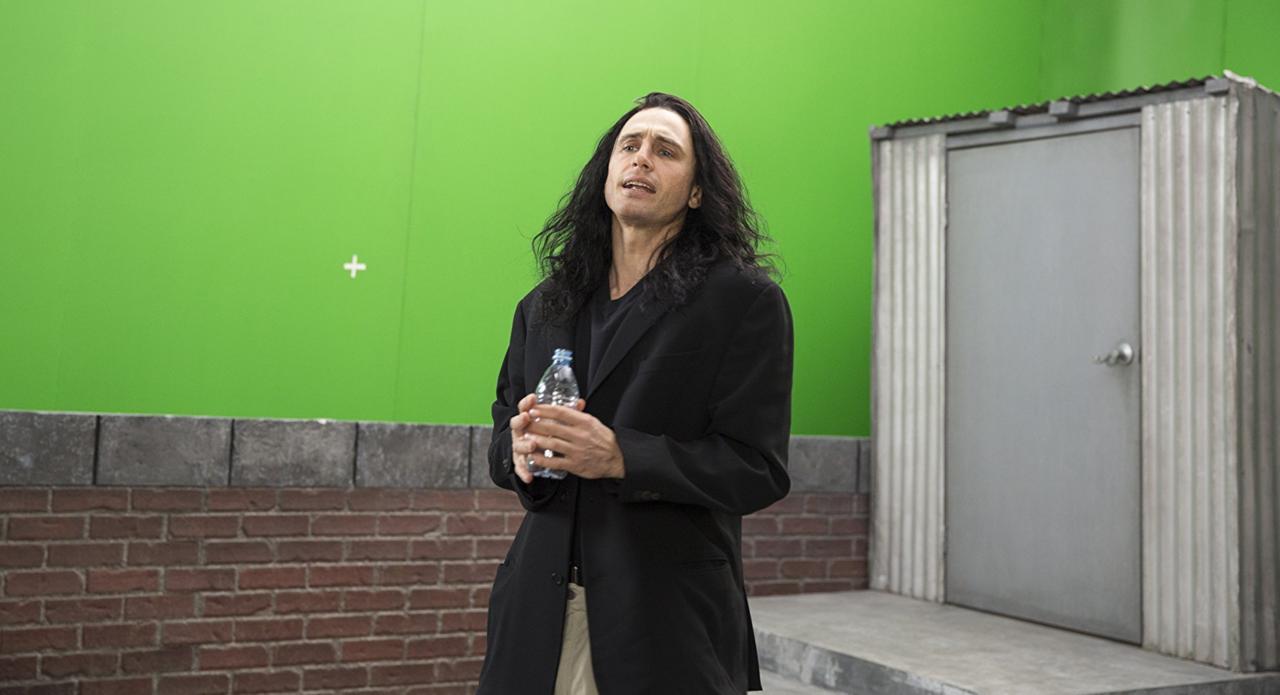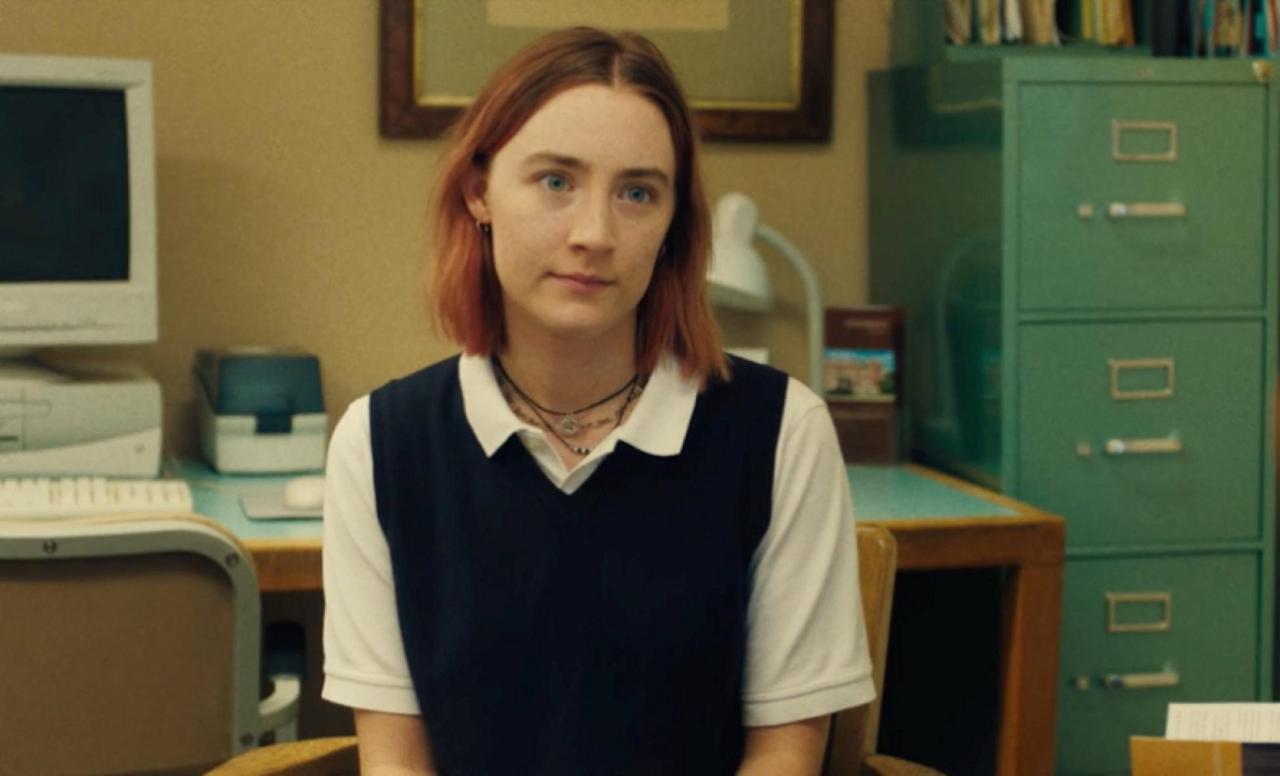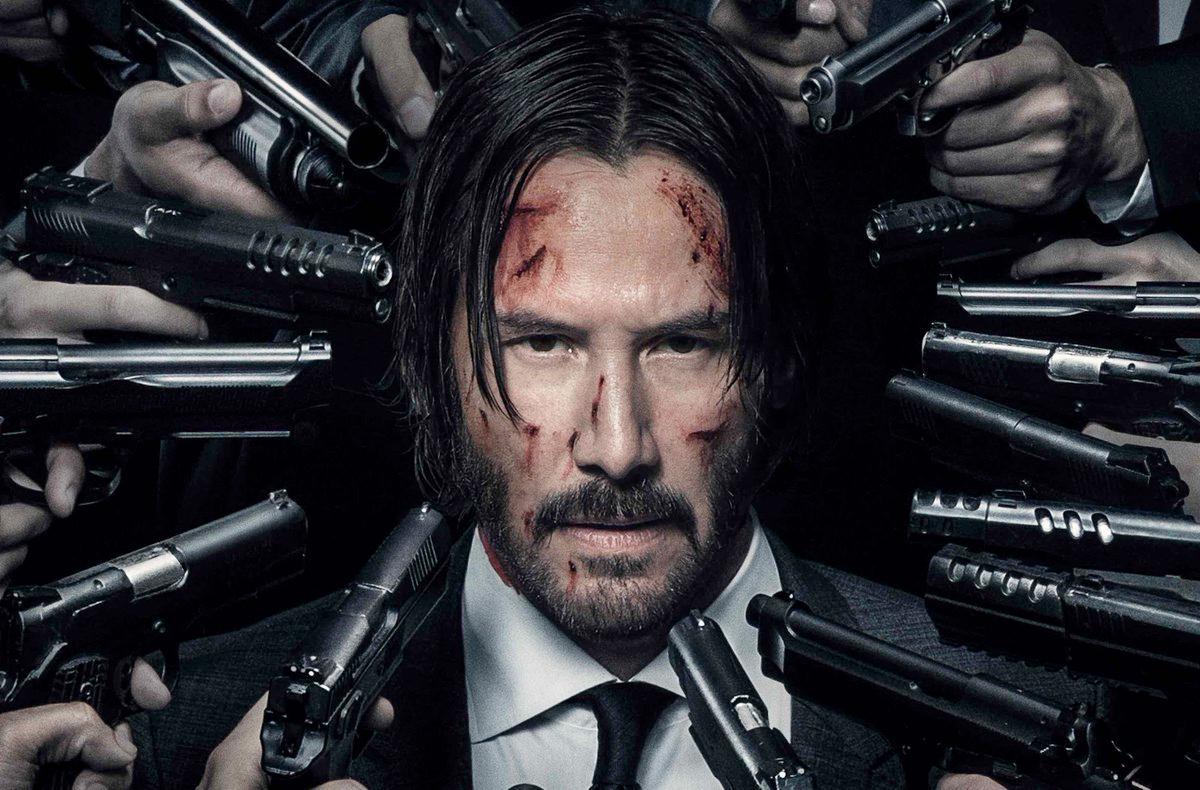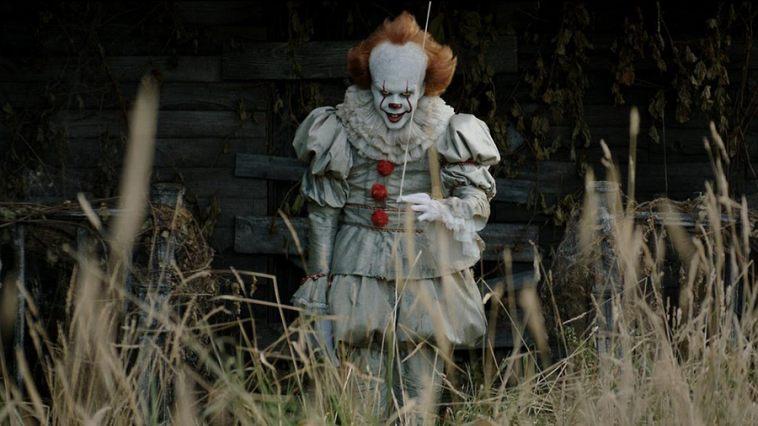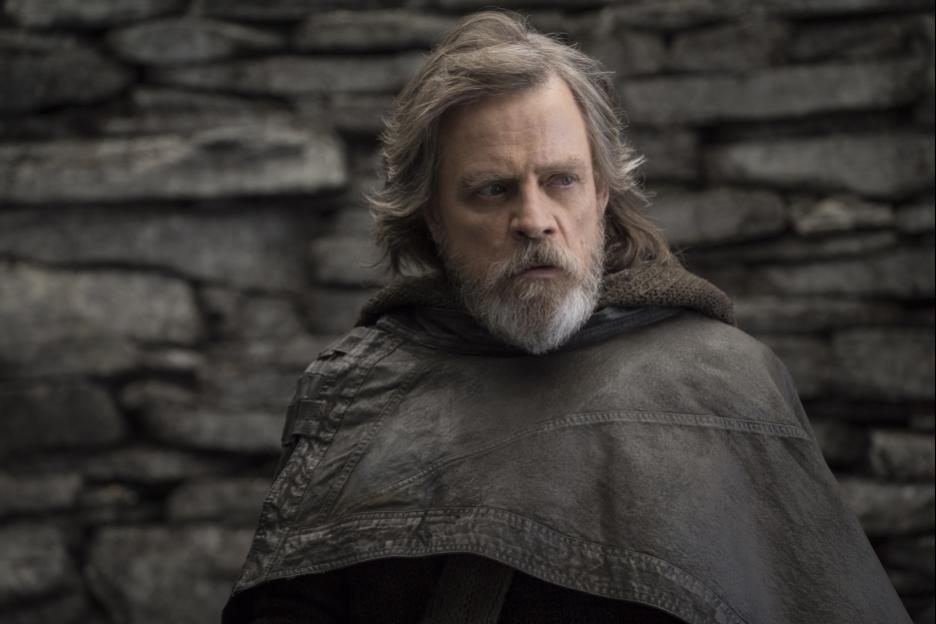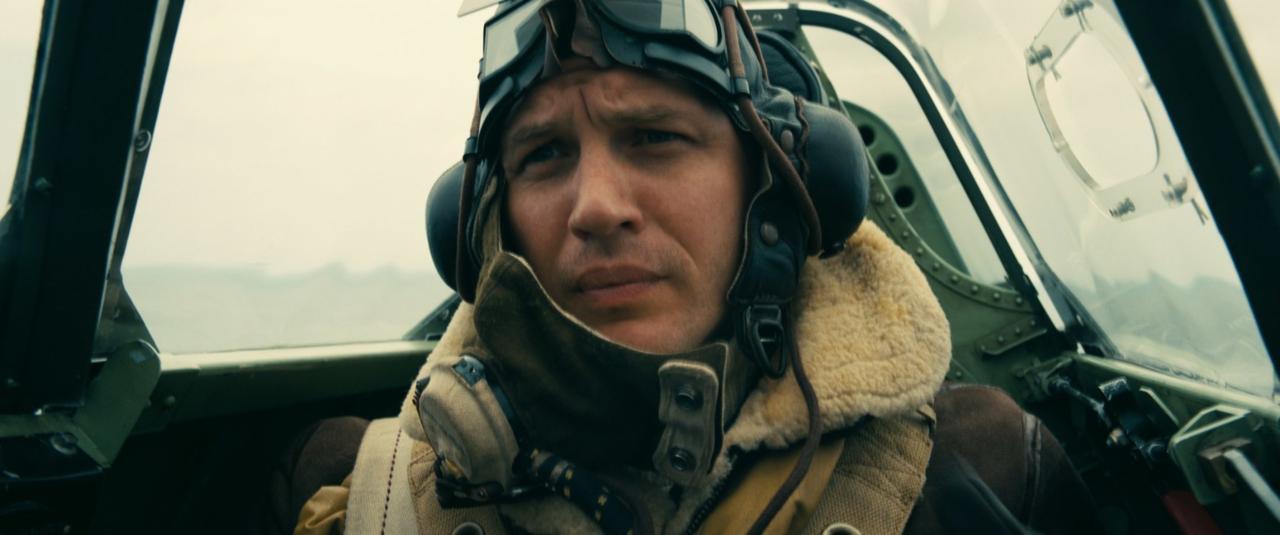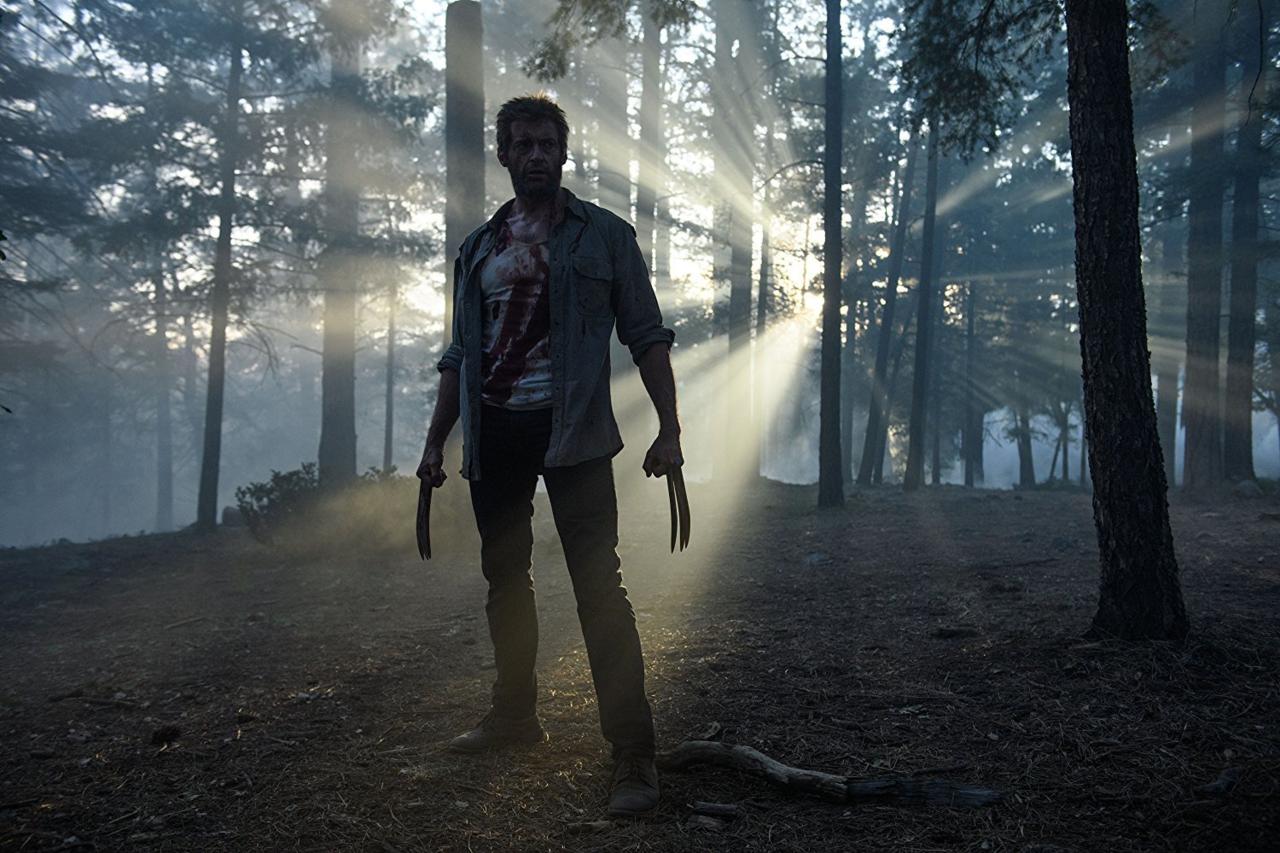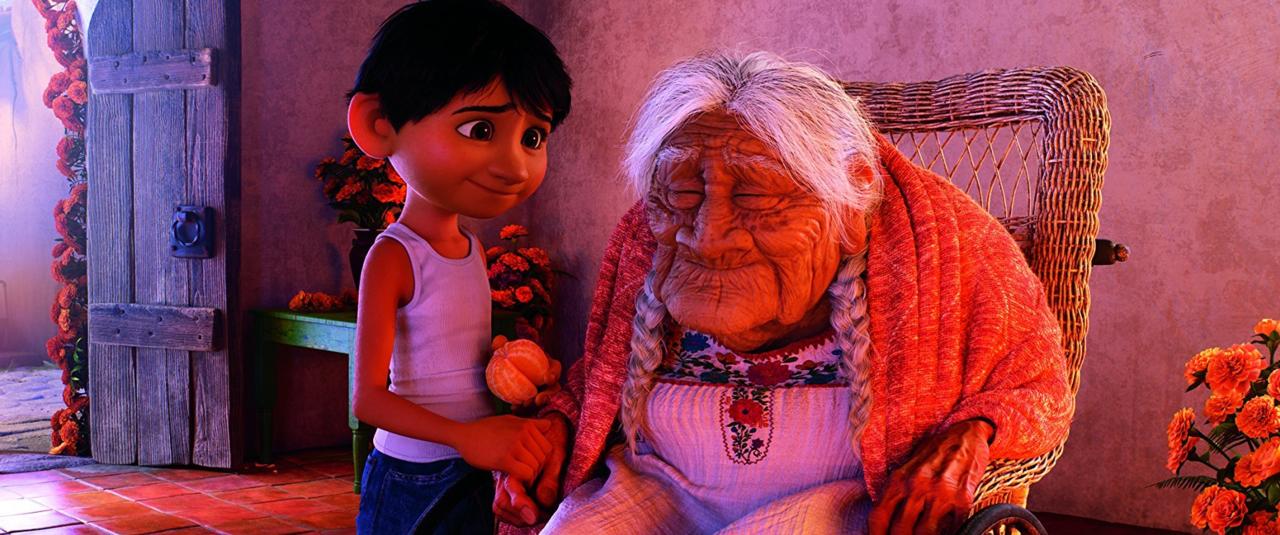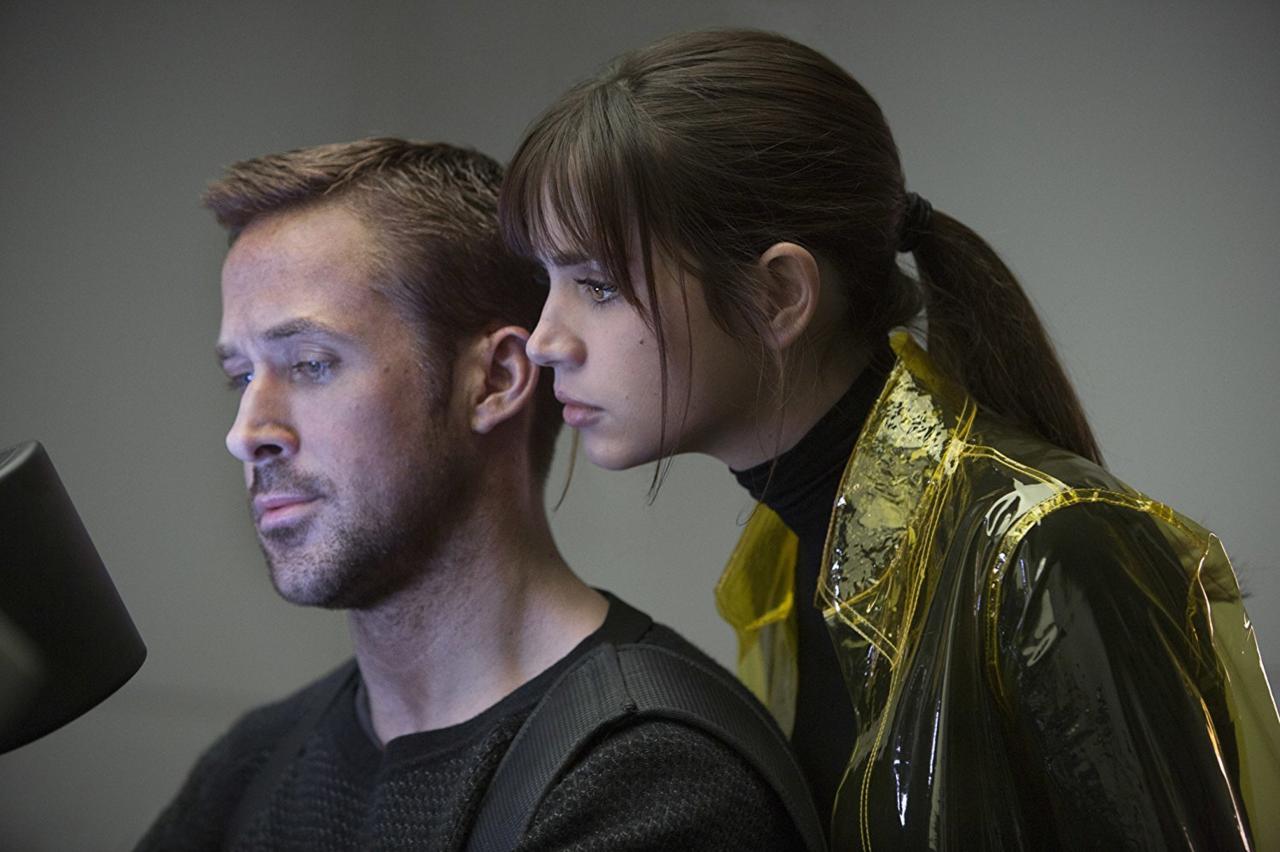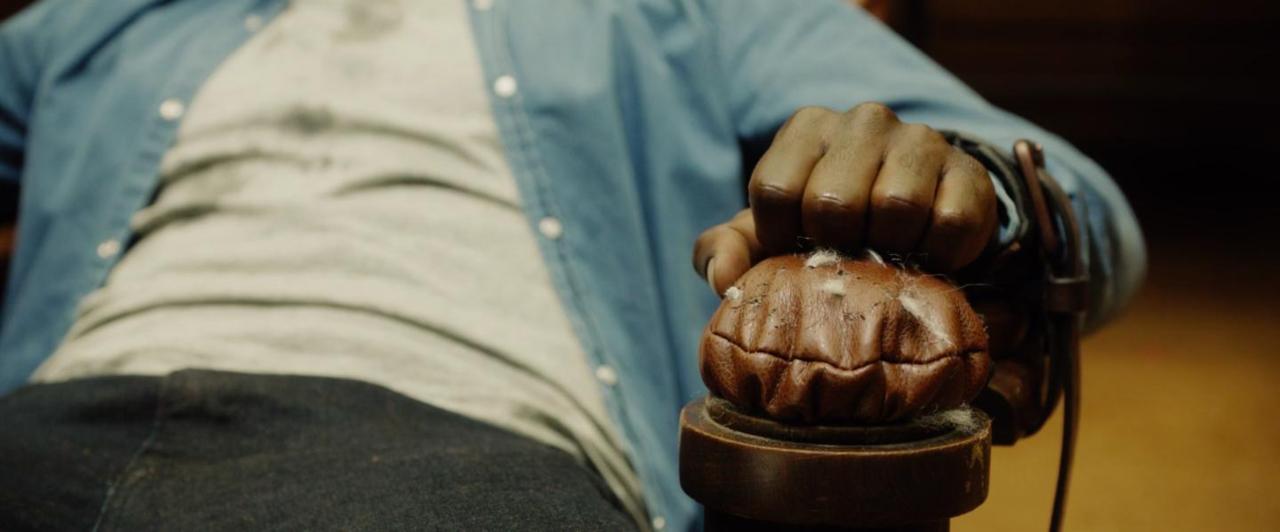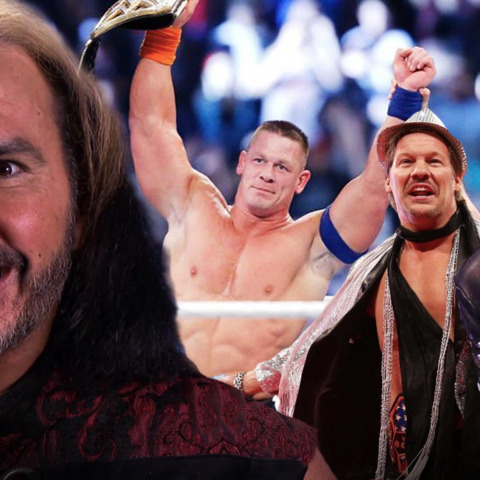The Top 10 Movies of 2017
GameSpot may receive revenue from affiliate and advertising partnerships for sharing this content and from purchases through links.
The Must-See Movies Of The Past Year
WARNING: THERE WILL BE SPOILERS AHEAD. BE WARNED.
If 2017 was an outstanding year for games, then the same can surely be said for movies. It's a great time to be a fan of superhero, sci-fi, horror, action, and other genre films, with some truly memorable releases giving us laughs, thrills, chills, and excitement during the last 12 months. It was so good, in fact, that you'll surely disagree with our list of the best 10 movies for 2017, as some clear fan favorites didn't make our final cut. But that was the challenge for the GameSpot crew; to distill the best of the best, to try and come up with our definitive list of the movies you must see. But just because your favorite may not have made our Top 10, it doesn't mean to say they're not worthwhile. So tell us what you think of our selections in the comments below, and list our your own personal Top 10 for 2017. But for now, click through and find our what GameSpot's selection came down to.
10. The Disaster Artist
The Disaster Artist is a movie about the making of Tommy Wiseau's cult-hit The Room. With James Franco in the leading role, The Disaster Artist explores the relationship between Tommy, the enigmatic visionary director, and Greg Sestero, a young, bright-eyed wannabe actor played by Dave Franco. The film manages to avoid the pitfalls of making Tommy Wiseau, an unusual and unpredictable man at the best of times, the butt of every joke, and instead tells a hilarious and empowering tale of one man following his dreams against all odds.
James Franco's transformation into Tommy, The Room's writer/director/executive producer/financier/leading man (and maybe he's also a vampire), steals every scene and serves as a reverent homage to the man himself. Wiseau, who is infamous for having a completely unplaceable accent and a mysteriously bottomless pool of money, wants to make a real Hollywood movie, despite not having the slightest idea how. The Disaster Artist chronicles this journey through making The Room, and also through the eyes of his exasperated cast and crew, who simply have to stand by while he makes every film making mistake possible.
While Wiseau succeeds in finishing his movie, The Room is widely considered to be one of the worst films ever made. Over its 99-minute run time, viewers are treated to an utterly bizarre plot, shots that are only ever half in focus, and dialogue that no human would ever say. Tom Bissell, who co-wrote the book The Disaster Artist is based on, is completely right when he says, “It is like a movie made by an alien who has never seen a movie, but has had movies thoroughly explained to him.” And yet, since its limited release in 2003, The Room has become a cult classic, regularly playing to sold out theatres all over the world.
The Disaster Artist fully embraces just how rabid and obsessive The Room’s fanbase is, recognizing that many intimately know the intricacies of its bizarre scenes and know every one of its infinitely quotable lines. It does an impressive job of conveying just why people love The Room so much, and it's peppered with niche references that diehard fans will appreciate. The side-by-side recreations of some of The Room's most famous scenes are an absolute highlight, and the attention to detail shows just how much love Franco and team put into The Disaster Artist.
The Disaster Artist could have simply poked fun at Wiseau's eccentricities, but instead it's a heartwarming celebration of one man's dream to create a real Hollywood movie. And despite the odds, the naysayers, and the questionable quality of the resulting movie, he completely succeeded.
9. Lady Bird
It’s extremely difficult to find anything truly bad to say about Lady Bird. The comedy-drama is void of many of the tropes and cliches we’ve seen so many times in the coming-of-age teen genre, and when Lady Bird’s credits roll and audiences head towards the exits, one thing can be heard over and over again: “That’s me!” This may be one of the most touching and heartwarming films (that’s not a Pixar movie) we’ve seen on a big screen in a long time.
Lady Bird tells the story of Christine "Lady Bird" McPherson, played by the incredibly talented Saoirse Ronan. Lady Bird longs to leave her Sacramento home for a new beginning in college on the East Coast. Yet, her mother believes she doesn’t have a shot in hell to get into a great school. The film's strongest force is the bond between Christine and her mother (Laurie Metcalf). Ronan and Metcalf deliver a complex and heartbreaking performance that will leave you wanting to immediately call a family member and tell them you love them.
While the mother and daughter duo are the heart of the film, the secondary cast is absolutely enthralling. Gerwig manages to get pitch perfect performances from Christine’s best friend Julie (Beanie Feldstein), and her early crush-turned-friend Danny (Lucas Hedges). Hedges' role, in particular, is extremely well done; the amount of depth and character development is stunning for such a small role with so much going on in 90 minutes.
Lady Bird puts a fresh face on the coming-of-age story, while having a wealth of true-to-life characters. With its wonderful performances and incredible direction, Lady Bird is easily one the best films of the year.
8. John Wick: Chapter 2
Keanu Reeves’s action credentials were already sealed by lead roles in Speed, Point Break, and The Matrix. But with the star now in his 50s, no one expected him to suddenly headline a new series of action thrillers, let alone some of the best American action movies of recent years. But that’s exactly what the John Wick movies have delivered.
John Wick was modestly budgeted and only a moderate success at the box office in 2015, but rave reviews and its popularity on home entertainment formats not only paved the way for a sequel, but gave director Chad Stahelski a much larger budget to play with. Stahelski fully embraced this opportunity, making a film that both expanded what we knew about the first movie’s hidden world of criminals and assassins, but also dug deep into the characters and unleashed some incredible set pieces.
While the first movie saw Wick as the hunter, seeking revenge for the death of his dog while trying to get his car back, in John Wick: Chapter 2, he became the hunted. It was a smart move, for while there was much pleasure seeing Reeves dispatch every adversary through a lethal combination of bone-crunching martial arts and extravagant gunplay, a seemingly invincible hero can quickly become a boring one. In Chapter 2, Wick seems genuinely vulnerable, and his inability to get out of an increasingly desperate situation provides real stakes and much-needed character depth. Reeves again plays to his strengths, using his star-power and letting his physique and moody intensity do the talking. The movie has a great supporting cast too--from Ian McShane’s hotel "manager" and Lance Reddick’s concierge to new roles for the likes of Common and Laurence Fishburne.
Fans who loved the first movie’s brief look into the world the Continental--the chain of hotels that operate as neutral ground for rival assassins to meet, negotiate, and relax--were amply rewarded with a more detailed exploration of the rules and conventions of this killers’ playground. As for the action, it was unquestionably the year's best. With kinetic, inventive gunfights, car chases, and hand-to-hand combat, the movie finds a seemingly endless supply of locations and styles in which to present its mayhem. From the opening confrontation with Russian mobsters to the brilliantly clever silent subway shoot-out and climactic showdown in a hall of mirrors, it was all spectacular stuff.
7. It
In a year of truly excellent horror movies, Itwas an absolute standout. Director Andy Muschietti not only put his own stamp on Stephen King's seminal 1986 novel (and the 1990 TV miniseries), but also created an utterly terrifying cinema experience. Despite being chapter one of two, It feels like a complete story that manages to balance a heartfelt coming of age narrative with a deeply unsettling and terrifying tale of a supernatural menace.
It takes place in a small town named Derry in the late '80s. Every 27 years, the people of Derry are terrorised by a child-eating, shape-shifting creature that calls itself Pennywise the Dancing Clown. The adults of the town know deep down that something is wrong, but seem not to care or are simply unable to act. As children continue to go missing in the town, either with their bodies turning up in pieces or never turning up at all, a group of misfits band together to try to get to the bottom of the mystery.
Pennywise's ability to shapeshift into what you're most afraid of was criminally underused in the 1990 TV miniseries, and while Tim Curry delivered a haunting performance as the sewer dwelling clown, Bill Skarsgard's slobbering, unsettling take on the character elevates It from cheap scares to genuine dread whenever you sense his presence.
The kids in It have a truly fantastic dynamic, with Stranger Things' Finn Wolfhard as Richie "Trashmouth" Tozier and Jack Dylan Grazer as Eddie Kaspbrak providing much-needed comic relief from the relentless horror of Pennywise's antics. There's ample opportunities for "your mom" jokes, poking fun, and caring for each other. Their friendship is the heart of the story, and it's a joy to watch it play out in such a heartfelt way on screen.
2017's adaptation of It came with some smart changes from the original book. The writers bumped the original timeline from the late '50s up to the '80s, not just to cram in a truly incredible number of New Kids On The Block jokes, but to provide a more relatable backdrop for the audience. They also removed the controversial sex scene from the novel, and crafted an ending that simultaneously teed-up the sequel and rounded the first film off neatly.
It is a fantastic adaptation of one of King's most famous and popular novels, and it accomplishes a rare feat: it does the source material justice, while also making marked improvements to an impressive but flawed masterpiece.
6. Star Wars: The Last Jedi
If you were upset that Star Wars: The Force Awakens stuck too closely to the template set by A New Hope, then the first half of The Last Jedi might just give you heartburn. The latest Star Wars film has more than a little in common with The Empire Strikes Back, including a beginning that sees a devastating Imperial attack on a Rebel base (now known as the First Order and the Resistance), a plucky young Jedi at a remote planet trying to seek training from a wizened old master, and a group of our heroes being pursued through space by a huge armada.
But at about the film's halfway point, The Last Jedi makes several stunning narrative choices, swerving at just the moment when everything seems like it's becoming too predictable. Characters you thought you knew act in surprising (but ultimately understandable) ways, while situations find resolution in unexpected outcomes. The Last Jedi is, for the first time in this new Star Wars trilogy, surprising in all the right ways.
It does all this while staying true to the core of what Star Wars is; rollicking adventures set in a galaxy far, far away, where the forces of good try to prevail against the almost overwhelming forces of evil. There are setpieces in this film that rival in excitement and spectacle anything seen in previous Star Wars films, starting from the riveting and tense opening space battle all the way through to the climactic standoff on the red, dusty surface of the mineral planet Crait. The Last Jedi, too, retains the heart of the series, making you feel as much for the new cast of Rey, Finn, and Poe as you do for the series' original heroes. And if you felt Han Solo was a little shortchanged in The Force Awakens, fear not; both Luke SKywalker and Leia Organa shine in this film, and get the endings (if they are endings) these two iconic characters richly deserve.
The Last Jedi is both a loving homage and send-off to the original trilogy, as well as the official launching point for the galaxy's newest heroes (and villains). If The Force Awakens' job was to make you excited about what Star Wars was, then The Last Jedi is here to make you excited about what Star Wars can be.
5. Dunkirk
Dunkirk is one of the most tense, nail-biting movie experiences of 2017, an intimate psychological war film that focuses on the escape and survival of a few young men rather than the heroic, larger than life tales of conflict.
The movie is based on the Dunkirk Evacuation, also known as the Miracle of Dunkirk or Operation Dynamo. It's an event that British PM at the time Winston Churchill called “a colossal military disaster,” with the whole core of the British Army stranded at Dunkirk, surrounded by German forces.
Dunkirk pulls away from the firefights and skirmishes of squads and battalions, and instead highlights a more intimate aspect of war: survival. The entire movie is cast in doom and gloom, to the point that you celebrate every small victory on the screen, actively striving and rooting for the protagonists in a way that only the best war movies are able to capture.
The somber, intense, unimaginable pressure is incredibly captured and portrayed by the cast, which is chock-full of great British thespians like Mark Rylance, Kenneth Brannagh, Tom Hardy, and... former One Direction band member Harry Styles.
It’s also hard to believe that the runtime comes in at a brisk one hour and 46 minutes, as the amount of ground it covered made Dunkirk feel more like an impassioned HBO special in the vein of Band of Brothers. Smartly entwining the story threads---land, sea, and air, each with their own timeframe of one week, one day, and one hour--Dunkirk is a tightly constructed pressure-cooker thriller. The tight framework is helped along by an ever-present ticking clock that dogs the soundtrack and perfectly encapsulates the pressure that the characters on the beach are feeling.
Dunkirk is a faithful retelling of one of the most pivotal moments of World War II, both exciting enough to bring us to the edge of our seats, but also emotional enough to bring tears to our eyes.
4. Logan
You know Logan is trying to be a different type of superhero movie right from its opening shot: Wolverine (Hugh Jackman), drunk, dishevelled, weary, waking up alone in the back of a car. There's no glamor to this superhero, no slow motion walk toward the camera, no dramatic three-point landing pose. It's just a man, down on his luck, alone.
What follows tells you everything else about what this movie wants to be. Wolverine gets attacked by car thieves, and after initially getting beaten severely, his claws finally come out. He slices off limbs, tears open stomachs, drives his adamantium appendages through skulls. Logan is a raw superhero movie, both in the graphic ways it shows violence, but also in the way it takes its key characters through their emotional nadirs.
As a send-off for one of superhero cinema's most beloved characters, Logan could not have been more perfect. Watching the character of Wolverine through the various X-Men and standalone films to then see him in Logan as this vulnerable, broken character is truly affecting, lending the film a gravity and weight few others in its genre have. Superhero films are often dismissed as being trivial; Logan is the rebuttal to that.
3. Coco
Pixar's Cocoturned out to be one of the most surprising movies of 2017, not least because the legendary Disney-owned animation house had some relative duds recently with movies like The Good Dinosaur, Cars 3, and Finding Dory. Fortunately, Coco is Pixar at its absolute best, a return to form that reminded us exactly what the studio is capable of.
It's not just that Coco turned such a respectful and reverent eye on the beautiful, underrepresented Mexican culture surrounding the holiday Dia de los Muertos--the Day of the Dead--or that it sets a new standard for art direction and fidelity in computer-generated animation, even by Pixar's already high standards. What really makes Coco so exceptional for anyone who watched it this year is simple. It's hard to think of a film that better captured what it's like to be part of a family: the joy and the warmth, yes, but also the grief, pain, and vulnerability of being utterly dependent on the members of your clan, whether you like them or not.
Coco follows Miguel Rivera, a young boy in a small Mexican town who wants nothing more than to follow in the footsteps of his musical idol, the legendary Ernesto de la Cruz, despite his family's deeply ingrained hatred of music. The story is helped along by inspired performances from new actor Anthony Gonzalez (Miguel), Benjamin Bratt (de la Cruz), and Gael García Bernal (Hector), who round out an all-Latino cast that also includes a brief but heartbreaking appearance by Edward James Olmos.
In addition to the fantastic setting, art, animation, and characters, a couple of things really elevate Coco to become one of the best movies of the year--and Pixar's best film in years. For one thing, the story of Miguel's journey to the Land of the Dead in search of a family member who will give him their blessing to pursue a life as a musician is intensely relatable, not to mention full of genuinely surprising twists and turns. Even more crucially, Coco's music is unbelievably beautiful. Inspired by a variety of Mexican musical styles and artists, the movie's original songs run the gamut from hilarious to heartbreaking and everything in between, and it's hard to get them out of your head for days after you see the movie.
It didn't hurt that Coco released in time for Thanksgiving. Even if you didn't spend the holidays with family, you probably wished you had after you walked out of the theater, blinking back tears in the sunlight. Bet you called your mom, too.
2. Blade Runner 2049
The futuristic world of Blade Runner has always stood out from other sci-fi. There are the minute details, like the fascinating specifics of the Voight-Kampff test, meant to sniff out Androids who've become indistinguishable from humans. Then there's the fact that Blade Runner has never been strictly a dystopian or post-apocalyptic story; the sorry state of its world can't be blamed on some catastrophe or authoritarian regime, but simply on humanity's upper crust moving off-world and leaving the dregs of society behind on an Earth that's all but used up. It's a story of hubris and decay that's simultaneously completely alien and hauntingly familiar.
Blade Runner 2049expands on those timeless themes while adding some for the present day. Is our increasing reliance on technology doing more harm or good? How advanced can something like artificial intelligence become before the technology is manipulating us, rather than the other way around? Is love real if it's nothing more than a programmed response, no matter how deftly the code was written? Is "real" love between two people really more than programming anyway?
That's heady stuff, mental lifeblood for fans of cerebral sci-fi like Blade Runner. Absurdly beautiful cinematography by the legendary Roger Deakins, a rumbling, synthesized score, and director Denis Villeneuve's impressive practical sets all added to the movie's otherworldly quality. But against all odds, this sequel captures all that was good about the original, not by surpassing it in spectacle or scope, but by once again using the setting, aesthetic, and themes as a frame to tell a hyper-personal story.
Ryan Gosling's K is the perfect protagonist. As the viewer, you see in him what you want to see, depending where your views line up; is he truly an android, devoid of real emotion, or is there something more bubbling up under the surface of those cold eyes? K's mission to track down a being whose mere existence has the potential to burn his society to the ground sounds like it should be too big, too overwhelming in scale, but Blade Runner 2049 never strays from the personal journey. Everyone wants to be special, even androids--no matter what they dream of at night.
Blade Runner may not have needed a sequel, but we sure are glad it got one.
1. Get Out
Jordan Peele, one half of comedy duo Key and Peele, made his feature film debut in 2016 starring alongside a kitten named Keanu. The comedian followed that up by making our favorite film of 2017: Get Out. Known more for being a gifted comedian in front of the camera, Peele showcased his talents as both a writer and director, penning one of the most genuinely original and creative screenplays in recent memory. It was Peele’s fascination with the horror genre that inspired this standout social thriller.
Daniel Kaluuya plays Chris Washington, a young black man who’s leaving town on a trip to meet his white girlfriend’s parents for the first time. The film starts off rather innocently, except of course for the exceptionally awkward social interactions of the film’s white "liberals" that serve to further alienate Chris.
Then comes the twist, an extremely horrific one. We don’t want to give it all away, but it involves plenty of turns, and to say anymore would lessen the impact of this outstanding thriller. Peele’s script is far from the only standout here. The on-screen performances are stellar across the board. The tearful, wide-eyed close-up of Kaluuya, Betty Gabriel’s forced smile, and Allison Williams' insatiable appetite for Fruit Loops as she plans her new conquests are moments that will be forever burned into our consciousness.
Of course, exploring race relations on film isn’t a new phenomenon, but Peele’s incisive and heightened examination through the perspective of a black man is necessary and timely. He mixes a creepy-smart social critique with fright and suspense, resulting in a landmark moment for cinema, not just of the horror variety.
